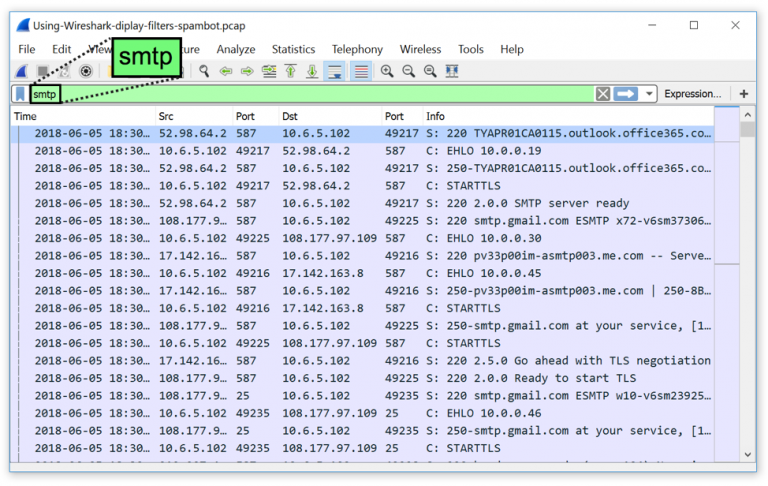


And you have just located the password and username you have entered on the unprotected login page - whether or not the password and username are correct are irrelevant. Once you get there look in the red text paragraphs and try to find what I was able to locate in the picture. Then you will right click on it and go down to "FOLLOW" then to "TCP STREAM". Using tshark -r dump.pcap -i http1 -O http -T fields -e -e -e > dump.txt I have all http requests and headers in a text file. Wireshark uses the same syntax for capture filters as tcpdump, WinDump, Analyzer, and any other program that uses the libpcap/WinPcap library.
#WIRESHARK FILTER HTTP FROM IPHONE MANUAL#
You can see exactly what I am talking about if you follow the pictures above. An overview of the capture filter syntax can be found in the Users Guide.A complete reference can be found in the expression section of the pcap-filter(7) manual page. Then at the far right of the packet in the info section you will see something like ".login" or "/login". You get lines like 14:18:52.276484 IP 89.17.221.55.http > 10.0. This drastically narrows the search and helps to slow down the traffic by minimizing what pops up on the screen. HTTP Proxy Injector requires URL/HOST to complete its settings. By filtering this you are now only looking at the post packet for HTTP. filter and improve your connection with SSH tunneling. Wireshark comes with the option to filter packets. Some of these networking tools, like Wireshark, Nmap, Snort, and ntop are. HTTP (Hyper Text Transfer Protocol) is the protocol we will be dealing with when looking for passwords. Thanks to its set of features, WinPcap has been the packet capture and filtering. The second step to finding the packets that contain login information is to understand the protocol to look for.


 0 kommentar(er)
0 kommentar(er)
